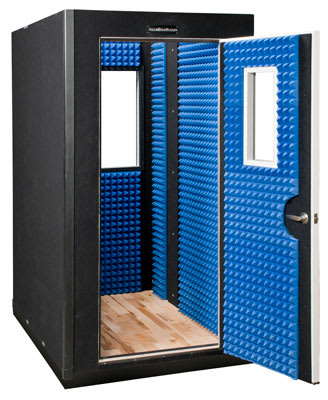Hello all,
I am a new-grad from mechanical engineering beginning work on designing a supply-only positive-pressure "booth" with a single blower at the inlet.
Starting with the ASHRAE eqn. for pressure differential (in PA) based off of differential flow rate given a leakage area;
Q=165.5*A*√∆P
This works fine when a reasonable estimate for the supply and exhaust flow are known, but if there is a simple damper on the exhaust, I'm wondering whether this equation is still usable, or if the equilibrium point of the space is governed by some other logic.
Additionally, this booth will be very small and well sealed (like this sound booth)

so I think it's somewhat reasonable that the leakage area will be negligibly small.
I hope to maintain a target pressure differential range without controls or an active damper on the exhaust.
Thanks very much in advance for any experience / insights / ASHRAE guidelines you might have
I am a new-grad from mechanical engineering beginning work on designing a supply-only positive-pressure "booth" with a single blower at the inlet.
Starting with the ASHRAE eqn. for pressure differential (in PA) based off of differential flow rate given a leakage area;
Q=165.5*A*√∆P
This works fine when a reasonable estimate for the supply and exhaust flow are known, but if there is a simple damper on the exhaust, I'm wondering whether this equation is still usable, or if the equilibrium point of the space is governed by some other logic.
Additionally, this booth will be very small and well sealed (like this sound booth)

so I think it's somewhat reasonable that the leakage area will be negligibly small.
I hope to maintain a target pressure differential range without controls or an active damper on the exhaust.
Thanks very much in advance for any experience / insights / ASHRAE guidelines you might have
